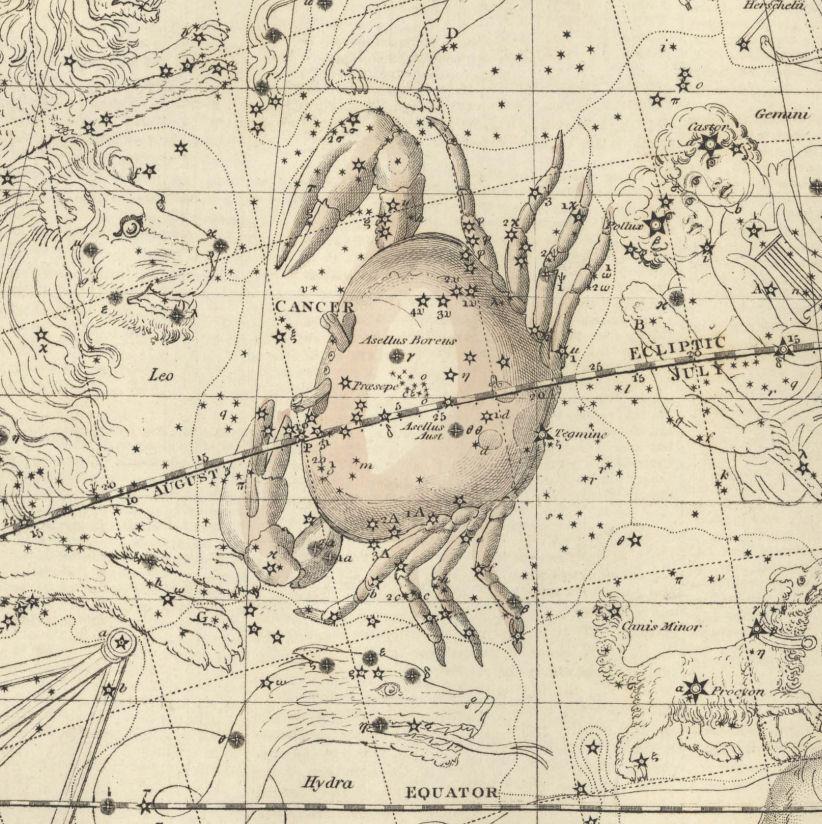
This depiction of the constellation Cancer (the Crab) is taken from the Celestial Atlas by Alexander Jamieson – 1822.
Although modern astrologers identify the sign of Cancer as a crab, it has been represented as various types of creatures, usually those living in the water, and always those with an exoskeleton.
The identification of Cancer as a crab is rooted in the Twelve Labors of Hercules tale. Hercules battled the multi-headed Lernaean Hydra and Hera had sent a large crab to distract Hercules and put him at a disadvantage during the battle. But Hercules quickly dispatched the creature by kicking it with such force that it was propelled into the sky. Other accounts say the crab grabbed onto Hercules’ toe with its claws, but Hercules simply crushed the crab underfoot. Hera, grateful for the creature’s heroic effort, gave it a place in the sky. (Some scholars have suggested that the crab was a late addition to the myth of Hercules in order to make the Twelve Labors correspond to the twelve signs of the Zodiac.)
In the Egyptian records of about 2000 BC, the Cancer sign was described as Scarabaeus (Scarab), the sacred emblem of immortality. In Babylonia the constellation was known by a name which can refer to both a crab and a snapping turtle. There also appears to be a strong connection between the Babylonian constellation and ideas of death and a passage to the underworld, which may be the origin of these ideas in much later Greek myths associated with Hercules and the Hydra. In the 12th century, an illustrated astronomical manuscript shows it as a water beetle. Albumasar writes of this sign in the work published in 1489 as a large crayfish. Jakob Bartsch and Stanislaus Lubienitzki, in the 17th century, described it as a lobster.
Those born during the Cancer period (June 22–July 22) are said to be emotional and intuitive but shrewd.
IF YOU LIKED THIS POST ABOUT THE FOLKLORE & OCCULT QUALITIES ASSOCIATED WITH CANCER THE CRAB, CLICK HERE TO SEE MY FANTASY NOVELS IN WHICH ALL THE MAGIC AND SUPERNATURAL EVENTS ARE BASED ON AUTHENTIC MEDIEVAL-RENAISSANCE OCCULT BELIEFS AND PRACTICES.



